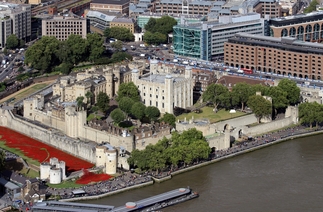The Tower of London, a historic fortress and royal palace, served as a notorious execution site for centuries. Numerous high-profile prisoners met their fate within its walls or at nearby Tower Hill. From royalty to religious figures and political opponents, the Tower witnessed the demise of many influential individuals, particularly during the Tudor period. This article explores the notable executions that took place at this infamous location.
Who Were the Most Famous Prisoners Executed at the Tower?

The Tower of London’s history is stained with the blood of many prominent figures. Here are some of the most famous executions:
- Anne Boleyn (1536)
- Catherine Howard (1542)
- Lady Jane Grey (1554)
- Margaret Pole, Countess of Salisbury (1541)
- William Hastings, Baron Hastings (1483)
These executions, particularly those of royal figures, sent shockwaves through English society and had far-reaching political implications.
What Were the Reasons for Executions at the Tower?

Executions at the Tower of London were typically carried out for the following reasons:
- Treason
- Heresy
- Adultery (in the case of royal consorts)
- Political opposition
- Religious dissent
The charges often served as a pretext for removing political rivals or unwanted spouses, especially during the tumultuous Tudor period.
How Were Executions Carried Out at the Tower?
Execution methods at the Tower varied depending on the prisoner’s social status and the nature of their crime:
| Method | Description | Notable Victims |
|---|---|---|
| Beheading | Reserved for nobility, considered more dignified | Anne Boleyn, Lady Jane Grey |
| Hanging, Drawing, and Quartering | Brutal method for traitors | Guy Fawkes (executed nearby) |
| Firing Squad | Used for spies and deserters | Josef Jakobs (1941) |
What Was the Significance of Tower Hill?
Tower Hill, located just outside the Tower of London, was a primary site for public executions. Over 100 people were executed here, including:
- Thomas More (1535)
- Thomas Cromwell (1540)
- Robert Devereux, Earl of Essex (1601)
These executions were public spectacles, designed to demonstrate royal power and deter potential traitors.
Who Were the Tudor Monarchs Responsible for Most Executions?
The Tudor period saw a significant number of executions at the Tower. The monarchs responsible for the most notable executions were:
- Henry VIII
- Ordered the executions of two of his wives (Anne Boleyn and Catherine Howard)
-
Executed numerous political and religious opponents
-
Mary I
- Known as “Bloody Mary” for her persecution of Protestants
-
Ordered the execution of Lady Jane Grey
-
Elizabeth I
- Executed Mary, Queen of Scots (though not at the Tower)
- Ordered the execution of Robert Devereux, Earl of Essex
What Was the Last Execution at the Tower of London?
The final execution at the Tower of London took place during World War II:
- Josef Jakobs, a German spy, was executed by firing squad on August 15, 1941
- This marked the end of the Tower’s long history as an execution site
How Did Executions at the Tower Impact English History?
Executions at the Tower of London had profound effects on English history:
- Shaped the course of the English Reformation
- Influenced royal succession
- Demonstrated the absolute power of the monarchy
- Served as a warning to potential traitors and dissenters
The Tower’s reputation as a place of execution contributed to its enduring legacy as a symbol of royal authority and political intrigue.
What Can Visitors See Today Related to Tower Executions?
Modern visitors to the Tower of London can explore several sites related to its history of executions:
- Tower Green: Site of private executions within the Tower walls
- Scaffold site on Tower Hill: Memorial marking the location of public executions
- The Crown Jewels: Symbolic of royal power that condemned many to death
- Yeoman Warder tours: Guided walks providing historical context and gruesome details
These attractions offer insights into the Tower’s dark past and its significance in English history.
The Tower of London’s history of executions remains a fascinating and chilling aspect of British history. From royal consorts to political rivals, the Tower witnessed the downfall of many influential figures, shaping the course of the nation through blood and intrigue.
References:
1. Historic UK – The Execution Sites of London
2. Wikipedia – List of prisoners of the Tower of London
3. Historic Royal Palaces – The Tower of London prison
